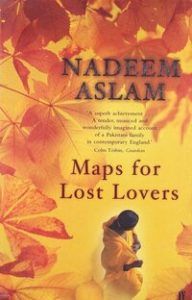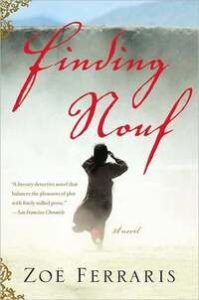—Jeanette Winterson Books and literature are meant to be an escape into worlds that aren’t our own. But what happens when the worlds they are meant to represent are nothing like what they show them to be? And the characters they hold within their pages are only stock caricatures of real life? Muslim women are mostly portrayed as the other, particularly in books by white non-Muslim authors. This in itself is problematic because it often tends to create an idea that Muslim women all fit under the same umbrella of Arab culture as well. The perpetuation of such stereotypes is extremely harmful to Muslim communities outside the Arab world who may already struggle with maintaining a religious identity within their individual self without falling prey to the idea of Arab dominance. The main scale for a female Muslim character to be measured upon is either the extent of or their battle with religiosity. This is in comparison to countless other characters whose religious identity is often only highlighted when it is relevant to the plot, not a central theme to the plot itself. Restricting stories of Muslim women to their religious identity takes away from the fact that in reality their identities are far more diverse and makes them appear one dimensional. Such was the case in Nadeem Aslam’s Maps For Lost Lovers in which Kaukab should have been as central to the storyline as her husband, mainly because of her position in the family and connection to the other characters in the plot. Despite that, she is reduced to an underdeveloped side character whose personality doesn’t go beyond lamenting her husband and children’s lack of religious practices. Even when we get glimpses into Kaukab’s past they are coloured with a sense of shame that appears to stem from her religious upbringing. Other female characters – such as Chanda, who decides to break cultural norms by living with a man outside of marriage, and Suraya, who has an affair with Shamas after her divorce – are defined mainly by whether the decisions they make abide by the cultural and religious norms of their society. The problem is not just creating female Muslim characters that all look and sound the same. It also extends to the idea that when a woman in a story takes on the identity of being Muslim, it becomes the sole identifier for all her decisions and actions. This discussion of whether or not a character is a ‘good’ Muslim woman often becomes their central plot line perpetuates a mindset that all Muslim women abide by the same set of personal morals and reduces them to a homogeneous group of women which is far from the truth. It takes away the right of Muslim women to be represented as characters with interests, desires, passions and unique characteristics that make them more than just being Muslim. Despite the fact that Zoe Ferraris’s novel Finding Nouf had a compelling plot line and worked great as a suspense story, her portrayal of Saudi women was more than disappointing. It’s not that all her female characters were shown to be meek submissive women, but rather that each step taken by those characters was questioned to the point that it had a plot line of its own. Where most female characters are allowed to have unique identities, Ferraris’s story is an example of how every time a Muslim character makes a decision, it is measured solely as being for or against the norm. Her book also consistently focuses on the idea of a woman’s sexuality in Muslim society. To some extent the narrative is understandable since it is meant be from the point of view of a male character who battles his own inner desires. However, the mention of female sexuality and sexualising the women in the book comes up almost every time a female character is around. The extent of these notions are discomforting because they force the female characters in the book to consistently be seen as sexual beings. The idea of creating Muslim characters that do not fit the stereotype and then overtly talking about just how much they do not fit said stereotype is a bit like thinking you can pass the Bechdel test by excessively talking about it. The Bechdel test measures the extent to which women’s conversations revolve around men, so when you bring up the Bechdel test in a group of women – you end up failing said test. Authors who write about Muslim women need to stop seeing them as a group with all the same interests, morals and identities. Such narratives can not only perpetuate harmful stereotypes against Muslim women who don’t fit the described norm, but can also cause them to feel ostracised within their own communities. It’s high time we stopped treating female characters like they were made of glass which would break at the slightest mention of more than one aspect of their identity.

